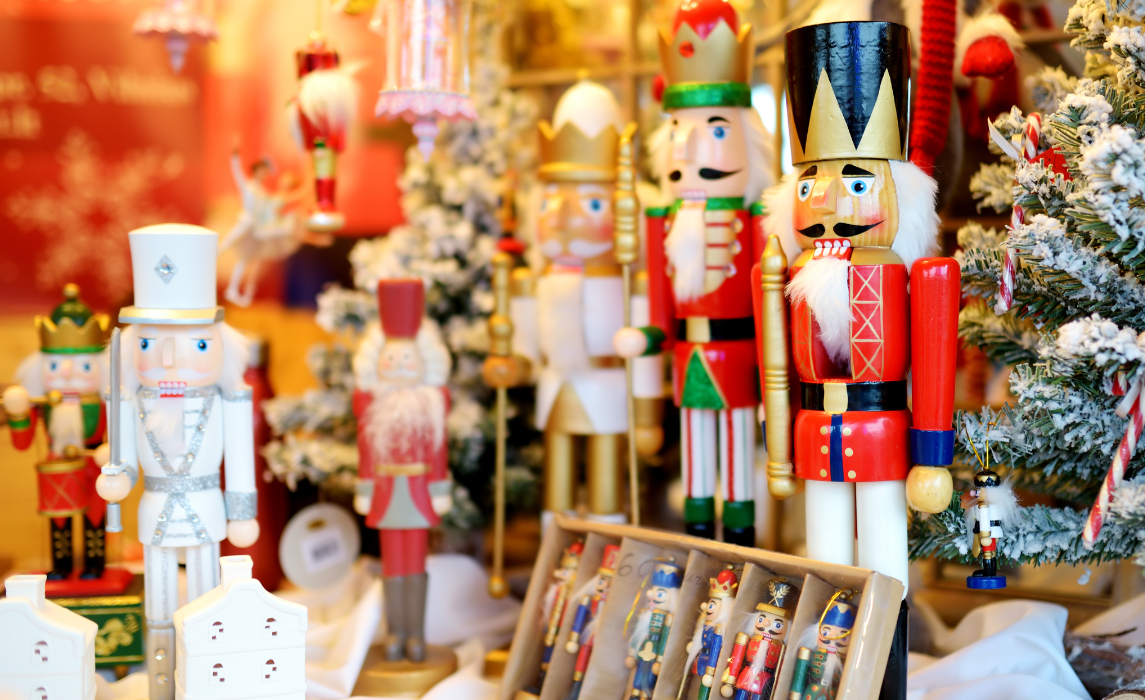Christmas is one of the few holidays that truly crosses borders—celebrated by over two billion people each year, in ways that reflect both faith and culture. While its origins are rooted in Christianity, the celebration has evolved far beyond church walls, blending local traditions, cuisines, and customs unique to every country. In Europe, you might find candlelit markets and choirs filling centuries-old cathedrals; in Asia, neon lights and festive sales turn cities into modern wonderlands.
But Christmas isn’t observed everywhere, and even where it is, not everyone celebrates for the same reasons. In some countries, it’s a time of deep religious reflection; in others, it’s a social event centered around family, food, and community. Some places even mark the holiday on different dates—December 25th for most Christians, January 7th for Orthodox communities, and January 6th for “Little Christmas” or Epiphany.
Understanding where and how Christmas is celebrated gives us a window into the world’s cultural diversity—and reminds us that the heart of the holiday isn’t limited to one tradition. Whether it’s the sound of carols echoing through European towns, lanterns glowing across Asian cities, or quiet gatherings in small villages, Christmas reveals how a single idea—peace, giving, and hope—takes shape in countless forms around the globe.
Countries Where Christmas Is Celebrated
Christmas is celebrated in more than 160 countries, yet how it’s observed varies widely — from sacred religious rituals to joyful cultural traditions.
In Europe, it’s the centerpiece of the winter season. Germany’s candlelit markets fill with the scent of mulled wine and roasted nuts, while the U.K. decorates historic towns with sparkling lights and community carols. North America turns the holiday into a spectacle, with towering Christmas trees, parades, and festive light shows across entire neighborhoods.
In Latin America, Christmas is deeply communal. Families celebrate with midnight feasts, music, and open-door gatherings that reflect a culture of warmth and generosity. Africa adds rhythm and color to the season — from Ghana’s drumming processions to South Africa’s beachside celebrations. Even in parts of Asia, the holiday thrives: Japan’s romantic “illumination” displays and the Philippines’ months-long Christmas season, the world’s longest, showcase how different cultures adapt the spirit of the holiday.
Christmas, while universal in message, remains beautifully local in meaning.
Christmas in France: Traditions and Celebrations
In France, Christmas blends refinement, family warmth, and centuries-old customs. Strasbourg’s Christkindelsmärik, one of Europe’s oldest markets, transforms the city into a fairytale setting of twinkling lights and handcrafted ornaments. Homes across the country feature crèches (nativity scenes), while dinner tables overflow with festive delicacies such as foie gras, oysters, and the signature bûche de Noël cake.
Regional variations make it even more fascinating: in Alsace, the German influence is clear through hearty spiced breads and local wines, while in Provence, families serve Les Treize Desserts to represent Christ and his apostles. Midnight Mass remains a cherished tradition for many, reflecting how France combines spiritual devotion with culinary and artistic expression.
Read Related Article: Easy Christmas Appetizer Ideas: Festive Finger Food for Your Party
Get inspired with easy Christmas appetizer ideas perfect for any holiday party. From festive finger foods to elegant bites, discover simple, crowd-pleasing recipes that bring flavor, color, and cheer to your Christmas celebrations.
Read More
Christmas in China: A Festive Blend of Cultures
Although not a public holiday, Christmas in China has become a lively urban event. In major cities like Shanghai and Beijing, shopping malls dazzle with elaborate decorations and themed performances. The celebration leans more cultural than religious — often centered around friendship, romance, and gift exchanges.
Younger generations embrace modern customs such as exchanging “Peace Apples,” a play on the Mandarin word for “peace” (ping’an), and attending Christmas Eve dinners with friends. Christian communities in China still hold midnight services, but the broader population enjoys the holiday as a symbol of warmth and connection. China’s version of Christmas is less about tradition and more about shared joy and urban creativity.
Where Christmas Is Not Celebrated
While Christmas has global reach, it’s not celebrated everywhere. Countries such as Saudi Arabia, Afghanistan, and North Korea do not observe the holiday officially due to religious or political reasons. However, globalization has brought subtle influences — hotels, cafes, and international spaces may feature Christmas trees or seasonal menus to cater to tourists and expatriates.
In some places, the spirit of the holiday exists quietly within communities. For example, Christian minorities in the Middle East or South Asia hold small gatherings and prayer services, even where the day isn’t recognized nationally. This quiet observance reflects how Christmas adapts to context, thriving in both freedom and restraint.
Where Is Christmas Celebrated on January 7th?
In Orthodox Christian traditions, Christmas is celebrated on January 7th, following the Julian calendar instead of the Gregorian one. Countries such as Russia, Ukraine, Serbia, Georgia, and Ethiopia mark the occasion with solemn liturgies, traditional foods, and extended family gatherings.
In Russia, believers fast until Christmas Eve and then share kutya (sweet wheat pudding) to symbolize unity. In Ethiopia, the day—known as Genna—begins with an all-night church service, followed by joyful dancing and community games. These celebrations highlight not only a different calendar date but also the cultural resilience of ancient Christian traditions.
The Best Places to Celebrate Christmas
Some destinations turn Christmas into an unforgettable experience. New York City glows with its Rockefeller Center tree and festive shop windows. Vienna enchants with classical concerts and Christmas markets that blend music, history, and elegance. Lapland, Finland, offers a magical winter wonderland complete with reindeer, northern lights, and the official Santa Claus Village.
In Paris, the holiday season is chic and illuminated, while Manila in the Philippines celebrates Christmas with unmatched warmth and community spirit through dawn masses (Simbang Gabi) and family feasts. These cities capture the diverse beauty of Christmas — from serene spirituality to sparkling spectacle.
Read Related Article: Best Cookies for a Cookie Exchange: Delicious Recipes for Your Swap
Discover the best cookies for a cookie exchange with these delicious and creative recipes. From classic favorites to festive new flavors, bake treats that will impress everyone at your holiday swap or Christmas party.
Read More
Where Is Christmas Celebrated Year-Round?
Some places never let the holiday spirit fade. Santa Claus Village in Rovaniemi, Finland, keeps the magic alive with year-round Christmas attractions, from reindeer sleigh rides to letter-writing workshops for children. In the United States, Santa Claus, Indiana, and Christmas, Florida, embrace the name with themed parks, holiday festivals, and post offices that stamp letters with Christmas postmarks.
These destinations prove that for some communities, Christmas isn’t just a season — it’s a lifestyle rooted in joy, generosity, and imagination.
Where Is “Little Christmas” Celebrated?
Known as Little Christmas or Epiphany, January 6th marks the visit of the Three Wise Men and concludes the festive season. In Ireland, it’s affectionately called Nollaig na mBan (“Women’s Christmas”), a day when women take a well-deserved rest while men handle household duties. In Spain, the holiday is filled with parades, music, and the traditional Roscón de Reyes cake, where whoever finds the hidden figurine becomes “king” for the day.
Across Latin America, Día de los Reyes Magos is a time for children to receive gifts and families to gather one last time before the decorations come down. It’s a reminder that for many cultures, the Christmas story doesn’t end on December 25—it culminates in the joy of Epiphany.
Where Is Christmas Mostly Celebrated?
Christmas is most widely celebrated in Christian-majority countries such as the United States, the Philippines, Italy, Brazil, and the United Kingdom, but its influence now extends to every continent. Even in non-Christian nations like Japan, India, and Singapore, Christmas has become part of urban culture — symbolizing generosity, light, and family connection rather than religious observance.
The Philippines is home to the world’s longest Christmas season, starting in September and ending in January, while Germany remains famous for its traditional markets. In contrast, the United States stands out for its creativity and large-scale displays, blending cultural diversity with festive energy.
Modern Highlights: Where Famous Figures Spend Christmas
Public figures often spend Christmas in places that reflect both luxury and sentiment. Barack Obama, for instance, traditionally celebrates in Hawaii, his birthplace, where the holiday is marked by family gatherings, outdoor barbecues, and quiet reflection by the beach. Similarly, the British Royal Family observes Christmas at Sandringham House, combining regal formality with long-standing family traditions.
These moments remind us that regardless of fame or fortune, Christmas continues to bring people together — not through grandeur, but through gratitude, connection, and the joy of being with loved ones.
Read Related Article: Christmas Eve Traditions for Families: Creating Unforgettable Memories
Celebrate the magic of the season with meaningful Christmas Eve traditions for families. From cozy activities and festive meals to heartwarming rituals, create unforgettable memories that bring everyone closer together.
Read More
FAQs: Understanding Global Christmas Traditions
Christmas may be celebrated differently around the world, but the heart of the holiday remains the same — joy, togetherness, and giving. These frequently asked questions explore fascinating details about how Christmas evolves across cultures, from early celebrations to modern eco-friendly traditions.
1. Why do some countries start celebrating Christmas as early as September?
Some countries, like the Philippines, begin celebrating Christmas as early as September, marking the start of the “Ber months.” This tradition stems from a strong sense of community, faith, and family — and reflects how Christmas isn’t just a single day but a long season of joy and preparation. The early start also allows families to spread out expenses and enjoy extended festivities filled with lights, music, and reunions.
2. How do non-Christian countries adapt Christmas traditions?
In many non-Christian nations such as Japan, Singapore, and Thailand, Christmas is celebrated as a cultural rather than religious event. Cities glow with festive lights, malls host themed displays, and restaurants offer special menus. The emphasis is on togetherness, kindness, and seasonal joy — values that transcend religion. This cultural adaptation shows how Christmas has evolved into a global celebration of goodwill and connection.
3. What are eco-friendly ways people celebrate Christmas around the world?
Sustainability has become a growing part of modern Christmas traditions. In Scandinavia, many people use natural materials like wood, straw, and paper for decorations. In Germany, reusable Advent calendars are popular, while in Australia, families often gift experiences instead of physical presents. These small shifts reflect a global awareness — celebrating meaningfully while caring for the planet.








.webp)